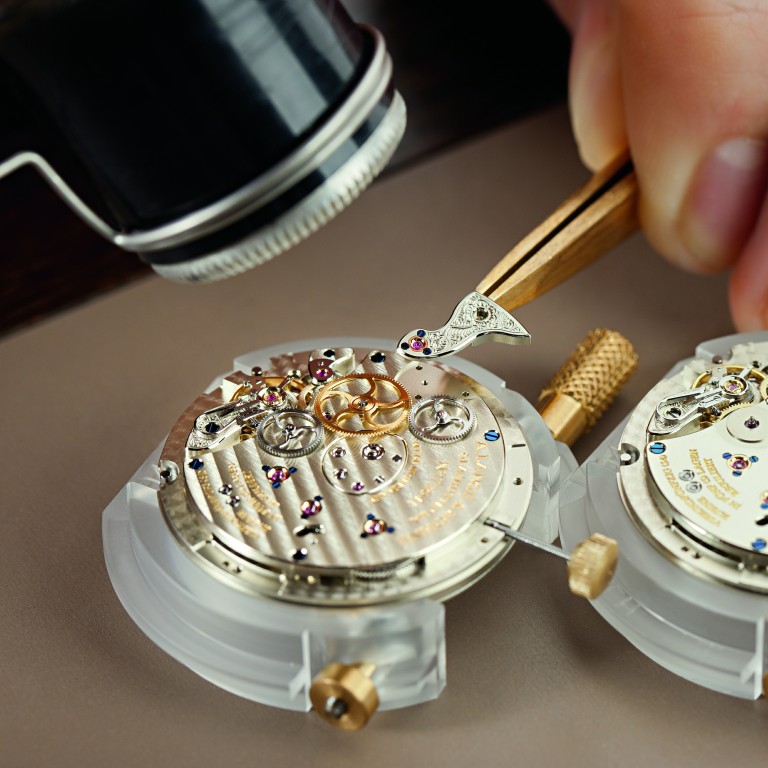
German town of Glashütte’s historical strengths in watchmaking have returned after its hiatus
Glashütte is showing strong, independent and innovative qualities in watchmaking to rival its Swiss counterparts.
When you think of watchmaking, the Swiss immediately come to mind. But other European lands have made their mark.
German brands and watch companies exist across the same spectrum as the Swiss, with group brands and independent watch companies as well. This ranges from those at the pinnacle of fine watchmaking and craftsmanship, such as A. Lange & Söhne, to smaller companies such as Sinn and Stowa, owned by individuals that enjoy close communication with enthusiasts. All have managed to carve out a niche in the enthusiast world.

After the wall came down, the historical strengths of the region returned, and it is again becoming an horological epicentre.
While smaller than that of Switzerland, the German watchmaking industry was strong, independent and innovative. The town of Glashütte in Saxony had to pull together at times to protect itself and its inventions from the neighbouring Swiss, examples being the three-quarter plate-based movements that are characteristic of the area’s work.
Friedrich Albert Lange founded his manufactory in Glashütte in 1845. It continued until circumstances forced a hiatus that only restarted in 1990 with Lange’s great-grandson Walter Lange. The same story goes for the region, which lost income, interest and the development of craftsmen in that break.
Today, A. Lange & Söhne is known visually for its clean, precise and balanced styles, but also for engraving and finishing work that many connoisseurs and collectors consider to be the highest elevation of the art. The company also moves forward technically with innovations such as its iconic outsize date.
“A. Lange & Söhne’s strength is based on the passion of our employees, our retail partners and the loyalty of watch collectors,” says its head of marketing, Katharina Mack.
A. Lange & Söhne has long focused on quality. When asked if its development of facilities would allow it to increase production, the answer was no.
“Given the craftsmanship, effort and time invested in each of our timepieces, we are not always able to satisfy the growing demand of Lange connoisseurs around the globe,” Mack says.
Looking deep into the movements themselves, at the ornately engraved and finished balance cocks and perfectly bevelled corners, the vision and devotion to passion continues.
One of its recent creations, The Zeitwerk Minute Repeater, brings together the digital mechanical display of time with the audible telling via a minute repeater, with the gongs seen through the front sapphire crystal, and combines past and future, craftsmanship and technological daring.
Its Datograph chronograph line is considered by many to be one of the most classically beautiful ever made.
Watch company Glashütte Original is proud of its location and heritage. It sees itself as custodians of the local and German characteristics, such as the three-quarter plate and swan-neck fine adjustment, while producing what it calls robust and solid movements and functional design.
When asked about the challenges it faces today, the company talks about finding enough young talented people so that the craft can be secured.
Its model line-up includes pieces that echo its heritage such as the colourful Sixties Iconic Collection, but also those that look to bring new technologies and practices forward.
Nomos Glashütte has perhaps the most distinctive watches around. They are borderline austere.
Its pieces have clean lines with thin details. It has avoided the more ostentatious visuals and cases that others have produced. Yet, it also has attention to detail and the reverence for technology.
A look through the sapphire crystal casebacks will show crisp finishing but with restrained embellishment. It says that what draws customers to Nomos Glashütte is the restraint in design, functionality according to the principle “form follows function” and value for money.
It costs less than other Glashütte brands, but maintains similar devotion to technology.
Its latest movement, an ultrathin automatic Calibre DUW 3001, includes a proprietary escapement. Uwe Ahrendt, Nomos Glashütte CEO, says: “DUW 3001 stands for best quality craftsmanship, outstanding technology and for a modern Glashütte.”

In a world where demand for simplicity and cleanliness of line is returning to the fore, this brand may benefit from following its own path.
There are other watchmakers in Germany. Sinn-Spezialuhren, based in Frankfurt and Stowa in the Black Forest, are run by independent owners and have developed their own followings among enthusiasts.
Sinn punches above its weight in the watchmaking world. Founded in 1961 by a flight instructor and former second world war pilot, Helmut Sinn, and now owned and run by certified engineer Lothar Schmidt, partnered with the FH Aachen-University of Applied Sciences to create a Technical Standard for Pilot Watches (TESTAF) meant to develop standards for pilots and aviation watches, certification which anyone could apply for.
They also produce limited hand-painted porcelain dial watches because Schmidt once decided that since Sinn makes watches in Frankfurt and Höchst makes fine-quality porcelain in Frankfurt they should team up.
The Stowa watch company, under the leadership of Jörg Schauer, has produced a refreshingly clean TESTAF-certified watch and an unusually-shaped rana case.
These German watch companies seem to have independent streaks, a devotion to technological advancement and an even stronger devotion to the people and areas that surround them.
